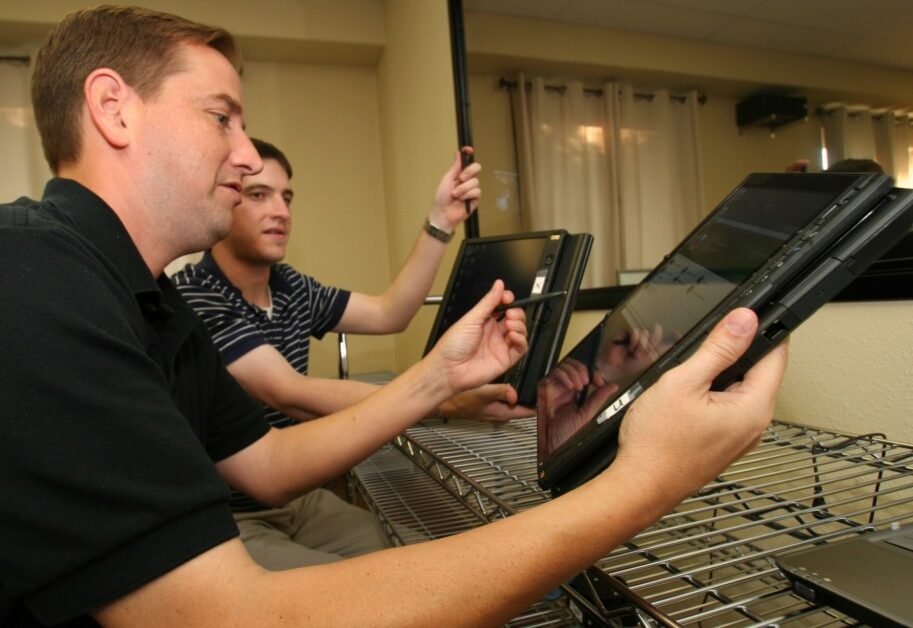Back to Basics 1: The What, Why and How of User Research

As we announced on a post here two weeks ago, we at Human Interfaces are using the extra time we have as much of the country is still emerging from COVID-19 shutdowns to pool our collective experiences and take a look back at the basics of user testing (and UX research more broadly). We’re calling this our “Back to Basics” blog series.
Before we can discuss the basic approach to user testing, however, such as what methods are appropriate in a given situation, we must first identify what user testing is and why you might want to conduct such an activity.
Why and how we test
There are various methods that fall under the umbrella of user research. Some of the specific approaches we will discuss in subsequent articles include contextual inquiries and task-based usability studies. No single method is right for all situations.
At the core, however, all user testing activities involve gathering feedback on a concept, idea, or interface from a representative sample of users of that product. In simple terms, this means that the participants you bring into the lab (or speak to remotely) exemplify the same characteristics of the target population out in the “real world”. The research could be applied to defining or developing a range of products (from hardware devices to mobile applications or web interfaces), or fine-tuning specific features of a product that is already in production. Across platforms, user testing can be used to:
- Identify unmet needs and drive the definition of new interfaces
- Refine interfaces already in development or on the market
- Unite development teams towards a shared vision
Identifying unmet needs
When setting out to create a new product or interface, the identification of unmet needs in existing or similar solutions can be one of the most valuable inputs. Such needs might reflect missing functionalities or usability issues with how those features are implemented.
By conducting targeted research with representative users, development teams can form a better understanding of what the new product should be capable of and how those capabilities should be implemented so that they meet the needs and expectations of users. Research findings can then be incorporated into product roadmaps and interface specifications and design documentation.
Common user testing methods aimed squarely at this goal include contextual inquiries, which will be discussed further in a later post.
Refining your product
User testing is also highly useful in refining products which are currently in development or when creating new versions or releases of interfaces which are already in the marketplace.
By putting a product in front of users, and observing them attempt to complete representative tasks, product teams can identify issues that detract from ease-of-use or product satisfaction. Often times, these gaps reflect implementation missteps. That is, regardless of how great an idea is, if the features are not implemented in an understandable and useable manner, it is destined for failure.
Activities such as usability studies, which we will post about in a couple weeks, can ensure that there is alignment between the intent of a design and its practical implementation.
Uniting development teams
Despite best intentions, product development teams occasionally suffer from bias or “tunnel vision”. That is, given a deep familiarity with your product, its functionality and design goals, those directly involved in development often have strong opinions, which can lead to inherent biases.
Such opinions and pre-existing notions do not always align with how real users view, understand or interact with your product or interface. Conducting user testing during development can help shed light on misalignments. User feedback can also provide a shared vision when internal teams disagree on how a given aspect of the product should work. User testing can be a mediating influence and help team members to coalesce around an approach to the product or feature and its execution within the interface.
Benefits of user testing
By identifying unmet needs, providing a basis for refinements to the interface, and helping to create a shared vision among development teams, user testing has a key role to play in product development. Additional benefits of user testing include:
- Increased product satisfaction and acceptance – by involving users in the development of your interface, you are increasing the chances that the final product will meet the needs of users, will be accepted by the market, and will provide a satisfactory experience
- Reduced support costs – eliminating issues in your design via user testing can reduce the likelihood of customer support contact. It can also help prepare customer support when issues cannot be fully resolved, due to technical limitations or the constraints of development timelines
- Improved user experience – User testing can extend your interface beyond the “minimum viable product”, helping teams to prioritize next-gen roadmaps and feature enhancements
Stakeholder involvement
Before user testing begins, it is critical that you specify key research objectives that you hope to tackle with the research. One of the keys to formulating clear research objectives is involving (and sometimes wrangling) stakeholders in the process. In many cases, the challenge may not be a lack of research questions, but rather entirely too many of them. Think of that “3 minute” customer survey you worked on that turned into 80 questions covering 15 different topics by the time you got through the first round of stakeholder input
Executing big picture objectives
A practical approach that can be effective in fighting this kind of bloat is to sit down with your stakeholders from the beginning and generate a list of 3-5 “Big Q” research questions (or hypotheses, if you like) that the user testing should address. Every other “little q” research question which stakeholders might be interested in should fit within those 3-5 overarching research objectives (or themes).
This exercise can pay big dividends in ensuring that the research can actually address the questions at hand and that stakeholders will get the results they need to inform development. Having these clearly formulated objectives also dictates which methods will be used, makes it easier to efficiently collect feedback during the user testing sessions, and provides a basis for a cohesive story when it comes to analyzing and reporting results.
In the next installment of our Back to the Basics series, we’ll be diving deeper into the process of selecting the right methods, based on an understanding of your big picture objectives. We hope you’ll join us!
In the meantime, drop us a note and tell us about experiences you’ve had trying to communicate the “what, why and how” of user testing within your organizations.
Yu-Shin Lin has an MS in Industrial Engineering, focusing on the field of Human Factors. She enjoys learning how people’s behaviors affect the design of products and interfaces in our lives. She works with an expert team of UX professionals at Human Interfaces, Inc to help custom research solutions for any UX challenge. If you need help from a full-service UX research consultancy for a study, recruitment, or facility rental, visit our website or drop us an email.



